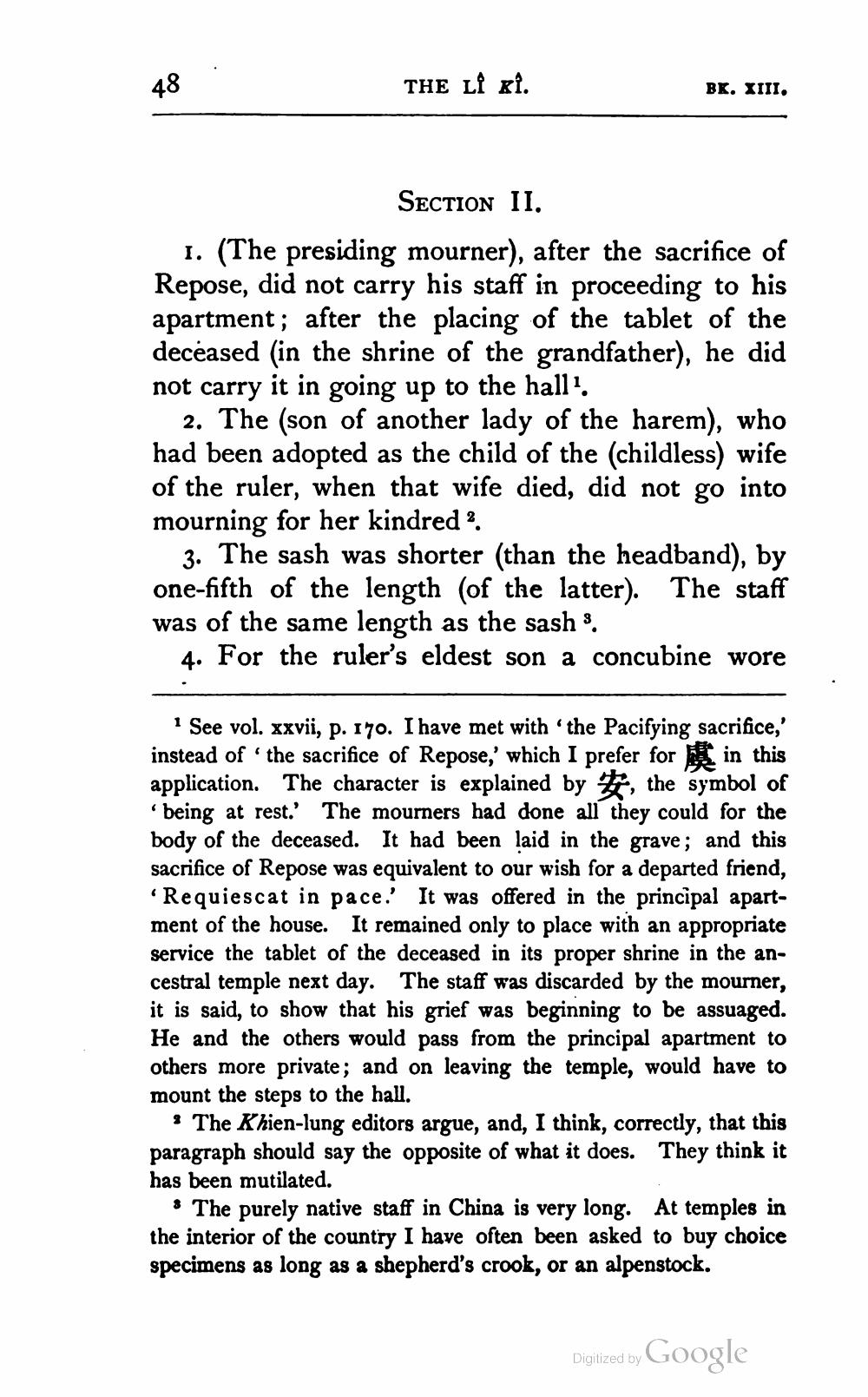________________
88.
THE LÎ ri.
BK, XIII.
SECTION II.
1. (The presiding mourner), after the sacrifice of Repose, did not carry his staff in proceeding to his apartment; after the placing of the tablet of the deceased (in the shrine of the grandfather), he did not carry it in going up to the hall?.
2. The (son of another lady of the harem), who had been adopted as the child of the (childless) wife of the ruler, when that wife died, did not go into mourning for her kindred ?
3. The sash was shorter (than the headband), by one-fifth of the length of the latter). The staff was of the same length as the sash 3.
4. For the ruler's eldest son a concubine wore
See vol. xxvii, p. 170. I have met with the Pacifying sacrifice,' instead of the sacrifice of Repose,' which I prefer for in this application. The character is explained by the symbol of
being at rest.' The mourners had done all they could for the body of the deceased. It had been laid in the grave; and this sacrifice of Repose was equivalent to our wish for a departed friend, "Requiescat in pace.' It was offered in the principal apartment of the house. It remained only to place with an appropriate service the tablet of the deceased in its proper shrine in the ancestral temple next day. The staff was discarded by the mourner, it is said, to show that his grief was beginning to be assuaged. He and the others would pass from the principal apartment to others more private; and on leaving the temple, would have to mount the steps to the hall.
• The Khien-lung editors argue, and, I think, correctly, that this paragraph should say the opposite of what it does. They think it has been mutilated.
The purely native staff in China is very long. At temples in the interior of the country I have often been asked to buy choice specimens as long as a shepherd's crook, or an alpenstock.
Digitized by Google




